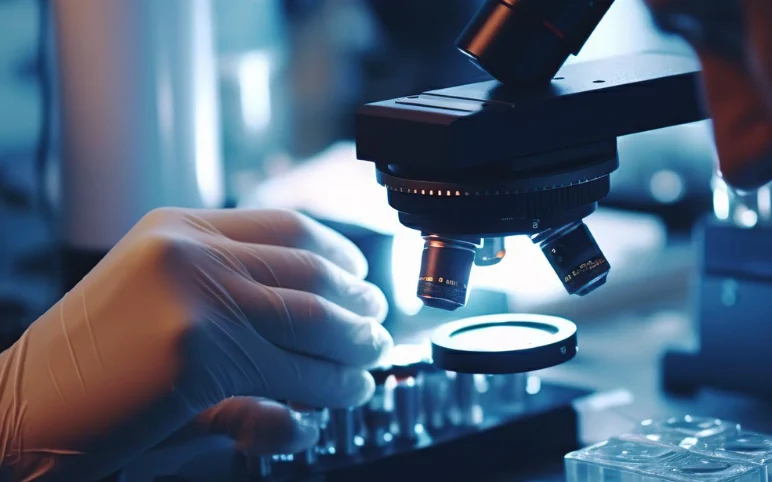Samsung Expands Global Reach of Sleep Apnea Feature on Galaxy Watch With CE Marking Certification in Europe
On June 5, 2025, Samsung Electronics Co., Ltd. announced the expanded global availability of its Sleep Apnea feature on the Galaxy Watch series, accessible through the Samsung Health Monitor app. The feature is now launching in 34 additional European countries, along with Australia and Singapore, bringing the total number of supported markets to 70.
This expansion follows the feature’s receipt of the CE (Conformité Européenne) marking, certifying compliance with the European Union’s stringent standards for health, safety, and environmental protection. The CE designation reinforces Samsung’s leadership in sleep health technology. In addition, the feature have recently been approved by Australia’s Therapeutic Goods Administration (TGA) and Singapore’s Health Sciences Authority (HSA).
This milestone builds on Samsung’s earlier achievement of obtaining De Novo authorization from the U.S. Food and Drug Administration (FDA), the first approval of its kind for a wearable device to detect signs of moderate to severe obstructive sleep apnea. The feature has also been cleared by the Ministry of Food and Drug Safety (MFDS) in South Korea, Brazil’s Health Regulatory Agency (ANVISA), and Health Canada.
Recognizing the vital role sleep plays in overall well-being, Samsung remains dedicated to improving users’ sleep quality through personalized sleep analysis, coaching, and environment optimization. The Sleep Apnea feature empowers more users to detect early signs of this common but often overlooked condition, helping to prevent related health complications.
Small lifestyle changes can lead to meaningful health improvements, starting with better sleep. With the global rollout of the Sleep Apnea feature, Samsung continues its commitment to equipping Galaxy users with innovative tools to support healthy sleep habits and overall wellness.
As per DelveInsight’s “Sleep Apnea Devices Market Report”, the global sleep apnea devices market was valued at USD 7.53 billion in 2023, growing at a CAGR of 6.26% during the forecast period from 2024 to 2030 to reach USD 10.82 billion by 2030. The demand for sleep apnea devices is primarily being boosted due to the increasing cases of sleep apnea and the rising population with obesity. Further, the rising adoption of advanced and innovative technologies, the rising awareness about sleep apnea devices, the increasing geriatric population, and the increasing product launches and approvals among others, thereby contribute to the overall growth of the sleep apnea devices market during the forecast period from 2024 to 2030.
ZEISS CLARUS 700 Received NMPA Approval in China
On June 5, 2025, ZEISS Medical Technology announced that the CLARUS 700 received approval from China’s National Medical Products Administration (NMPA). This advanced retinal imaging system delivers ultra-widefield, high-resolution images in True Color, setting a new standard for diagnostic quality. Equipped with Fluorescein Angiography, the device empowers eye care professionals in China to enhance their retinal workflow, ultimately supporting better patient outcomes and long-term vision preservation.
“ZEISS CLARUS 700 represents a major step forward in retinal imaging,” emphasizes Anuj Kalra, Head of Chronic Disease Management at ZEISS Medical Technology. “By seamlessly integrating ultra-widefield Fluorescein Angiography (FA) imaging with true-color reproduction, this system delivers unprecedented clarity for comprehensive visualization from the macular region to the extreme retinal periphery, enhancing efficiency and supporting precise decision-making within the ZEISS Retina Workflow.”
“Integrating ultra-widefield imaging, unsurpassed clarity, and AI-enhanced capture, the CLARUS 700 redefines fundus angiography benchmarks. It will provide unparalleled diagnostic precision for Chinese doctors and unprecedented comfort for their patients,” says Maxwell Liu, Head of Sales & Services at ZEISS Medical Technology China.
The ZEISS CLARUS 700 is an advanced ultra-widefield retinal imaging system developed for eye care professionals. It captures high-resolution, true-color images of the retina, offering exceptional image quality. Equipped with a full range of imaging modalities, including fluorescein angiography, it provides a comprehensive solution for detailed retinal assessment.
As per DelveInsight’s “Ophthalmic Imaging Equipment Market Report”, the global ophthalmic imaging equipment market was valued at USD 2.33 billion in 2023, growing at a CAGR of 5.97% during the forecast period from 2024 to 2030 to reach USD 3.29 billion by 2030. The demand for ophthalmic imaging equipment is primarily being boosted by the rising prevalence of diabetes and growing geriatric population base which resulted in the increased prevalence of ocular diseases of different etiologies, increasing number of image-guided surgeries, and technical innovation in product development which are expected to increase in the product demand thereby contributing in the growth of the ophthalmic imaging equipment market during the forecast period from 2024 to 2030.
Envoy Medical’s Pivotal Clinical Trial for Fully Implanted Acclaim® Cochlear Implant Remains on Track After First Month Follow-Up
On June 10, 2025, Envoy Medical Inc., a pioneering company in hearing health focused on fully implanted hearing devices that utilize the ear’s natural anatomy, announced a key milestone in its pivotal clinical trial for the fully implanted Acclaim® Cochlear Implant. All 10 participants in the first stage of the trial have successfully completed their one-month follow-up visits.
Brent Lucas, CEO of Envoy Medical, commented, “The feedback from investigational sites after the one-month follow-up visits continues to be positive and indicates we are on track with our pivotal clinical trial. We continue to build positive momentum with each milestone and have begun to accelerate our thinking about expansion and preparing for commercialization. We strongly believe that, if approved, our fully implanted Acclaim® cochlear implant will enjoy substantial patient interest, allowing us a rare opportunity to grow into a significant market participant relatively quickly. We believe our investigational fully implanted Acclaim® cochlear implant is well-positioned to be able to capture market share as the industry moves towards fully implanted cochlear implants and away from bulky externals.”
According to reports from the investigational sites, the follow-up visits are progressing as expected. Thanks to the implant’s innovative design, participants are able to hear continuously 24 hours a day, without relying on externally worn components. Importantly, no serious adverse events or unexpected device-related issues have been observed in any of the participants during the first month.
As per DelveInsight’s “Cochlear Implants Market Report”, the global cochlear implants market was valued at USD 1.38 billion in 2023, growing at a CAGR of 9.92% during the forecast period from 2024 to 2030 to reach USD 2.43 billion by 2030. The cochlear implants market is observing substantial market growth primarily owing to the increasing prevalence of hearing loss & incurs substantial economic costs, investing in cochlear implants & improving access to these devices and supportive reimbursement policies are anticipated to further accelerate the overall growth of the cochlear implants market during the forecast period from 2024 to 2030.
New Study Finds Masimo SedLine® Brain Function Monitoring Offers Significant Advantages During Pediatric Anesthesia
On June 10, 2025, Masimo announced the results of a randomized clinical trial published in JAMA Pediatrics, in which Dr. Yasuko Nagasaka and her team at Tokyo Women’s Medical University demonstrated that electroencephalogram (EEG)-guided anesthesia, using Masimo SedLine® Brain Function Monitoring, can enhance anesthesia management in pediatric surgical patients.
The study found that the use of SedLine significantly reduced the required dosage of sevoflurane, a commonly used inhalational anesthetic, thereby decreasing drug exposure. This reduction was associated with a notably lower incidence of pediatric anesthesia emergence delirium (PAED), a post-anesthesia condition marked by confusion, agitation, and hallucinations. Children monitored with SedLine also regained consciousness faster and were discharged from the post-anesthesia care unit (PACU) sooner than those managed with standard practices. The researchers highlighted that these time savings could translate into meaningful cost reductions. Overall, the study concluded that Masimo SedLine improves the safety, efficiency, and cost-effectiveness of pediatric anesthesia.
Children monitored with SedLine received an average of 1.4 fewer MAC hours of sevoflurane and experienced a 14% reduction in the incidence of PAED. On average, they regained consciousness 53% faster and were discharged from the PACU 48% earlier.
PAED is a common and clinically relevant complication in pediatric anesthesia, causing short-term distress for children, families, and clinical staff, with potential for longer-term behavioral issues. Volatile anesthetics like sevoflurane have been linked to the occurrence of PAED. Under current standard practice, pediatric anesthesia is typically maintained using a fixed dose of 1.0 minimum alveolar concentration (MAC) of sevoflurane, which may be excessive. Dr. Nagasaka’s team hypothesized that by using bilateral EEG, specifically the waveforms and multitaper density spectral array (DSA) spectrograms provided by Masimo SedLine, to guide anesthetic titration, clinicians could reduce sevoflurane usage while maintaining effective sedation, thereby lowering the risk of PAED.
In the trial, children aged 1 to 6 years undergoing elective surgeries requiring at least 30 minutes of general anesthesia at Japan’s largest pediatric hospital were randomly assigned to either a SedLine-guided anesthesia group (n=91) or a control group receiving standard care (n=86). The researchers tracked sevoflurane exposure and key time points such as intubation, extubation, PACU arrival and discharge, and anesthesia emergence. Clinicians assessing PAED outcomes were blinded to group assignments and used a validated assessment scale.
Yasuko Nagasaka, Professor of Anesthesia at Tokyo Women’s Medical University and the new study’s senior author, commented, “While general anesthesia is necessary for pediatric patients undergoing surgery, parents and guardians may express concerns about their child’s exposure to anesthetic drugs. We can now offer reassurance by explaining that modern medical technologies, such as EEG-guided anesthesia care, help minimize anesthetic exposure, potentially reducing the incidence of pediatric emergence delirium (PAED) and supporting earlier awakening and recovery from unconsciousness.”
“It is important to recognize,” continued Dr. Nagasaka, “that increasing the depth of anesthesia is relatively easy to learn. On the other hand, developing the confidence and skill to safely reduce anesthesia requires a deeper understanding. Our results may offer a great step forward towards the improvement of our common practice, which may lead to the development of guidelines for EEG monitoring in pediatric areas to eventually mandate EEG monitoring during general anesthesia in the future. But comprehensive training in EEG-guided anesthesia should be considered a critical next step for the entire anesthesia community.”
The clinical results showed that PAED occurred in only 21% of children in the SedLine group, compared to 35% in the control group (p=0.04). Children in the SedLine group were exposed to significantly less sevoflurane (1.4 MAC-hours lower on average), were extubated 3.3 minutes sooner, regained consciousness 21.4 minutes earlier, and were discharged from the PACU 16.5 minutes faster. Altogether, the total reduction of about 20 minutes in operating room and PACU time translated to an estimated cost savings of $240 to $920 per patient.
According to DelveInsight’s “Electroencephalography Devices Market Report”, the global electroencephalography devices or EEG system market was valued at USD 1,050.48 million in 2023, growing at a CAGR of 9.96% during the forecast period from 2024 to 2030 to reach USD 1,850.84 million by 2030. The demand for EEG devices is primarily being boosted by the increasing figures of neurological disorders such as epilepsy, stroke, coma, sleeping disorders, and others. Further, the rising adoption of advanced and innovative technologies, the increasing geriatric population, the increasing device launches & approvals, and others are contributing to the overall growth of the EEG devices market during the forecast period from 2024 to 2030.
Penumbra Introduced the Ruby® XL System-the Longest, Largest, and Softest Coil in the Market for Vascular Embolization
On June 5, 2025, Penumbra, Inc. announced U.S. Food and Drug Administration (FDA) clearance and the commercial launch of the Ruby® XL System-the longest, largest, and softest coil available on the market. The system is designed to enhance embolization efficiency, potentially reduce radiation exposure, and improve clinical outcomes, particularly in large vessel and high-flow embolization procedures.
The Ruby XL System features three innovative technologies-Ruby XL, POD® XL, and Packing Coil XL-all compatible with a 0.035″+ diagnostic catheter. Each coil has a primary diameter of 0.030″ and is engineered for procedural efficiency, offering greater volume (up to 40 mm) and extended lengths of up to 70 cm.
“We’ve engineered Ruby XL to deliver more volume per coil than any other coil on the market, which may result in cost savings,” said Shruthi Narayan, President of Interventional Business at Penumbra, Inc. “Ruby XL embodies Penumbra’s commitment to innovation, delivering mechanical occlusion through more volume without sacrificing softness or deliverability.”
The Ruby XL System incorporates three cutting-edge technologies—Ruby XL, POD® XL, and Packing Coil XL, all designed to be compatible with a 0.035″ or larger diagnostic catheter. Each coil features a primary diameter of 0.030″ and is engineered to enhance procedural efficiency by offering greater volume, up to 40 mm, and extended lengths reaching 70 cm. The Ruby XL coil boasts a complex 3D shape, making it ideal for framing aneurysms in a variety of clinical settings. POD XL features a hybrid, multistage design with a unique three-in-one coil occlusion technology, including anchoring, framing, and dense filling segments, optimized for use in high-flow vessels to ensure precise and controlled delivery. Meanwhile, the Packing Coil XL utilizes advanced liquid metal wave shape technology, enabling it to adapt dynamically to vessel size while providing consistent performance in vessels up to 70 cm long.
According to DelveInsight’s “Transcatheter Embolization and Occlusion Devices Market Report”, the transcatheter embolization and occlusion devices market was valued at USD 3.71 billion in 2023, growing at a CAGR of 9.14% during the forecast period from 2024 to 2030, to reach USD 6.25 billion by 2030. The transcatheter embolization and occlusion devices market is growing significantly due to the increasing cases of chronic disorders such as cardiovascular diseases including heart attack, atrial fibrillation, and coronary artery disease; respiratory disorders like asthma, chronic obstructive pulmonary disease (COPD), rising product developmental activities by key players, among others are expected to drive the market for transcatheter embolization and occlusion devices during the forecast period from 2024 to 2030.
Johnson and Johnson Launched the ETHICON™ 4000 Stapler for Elevated Surgical Experience and the Most Secure Staple Line Yet
On June 10, 2025, Johnson & Johnson MedTech, a global leader in surgical technologies, announced the U.S. launch of the ETHICON™ 4000 Stapler, an advanced surgical stapling system engineered to address complex tissue challenges and enhance staple line integrity, helping reduce the risk of surgical leaks and bleeding across various specialties.
Featuring proprietary 3D Staple Technology, a redesigned end effector, and optimized reload options for consistent performance from the first staple to the last, the ETHICON™ 4000 and ETHICON™ 3D Reloads are now approved for both open and laparoscopic procedures. These innovations are also slated for future integration with the OTTAVA™ Robotic Surgical System.
Johnson & Johnson MedTech will present the ETHICON 4000 System, along with its full suite of surgical technologies, at the upcoming American Society for Metabolic and Bariatric Surgery (ASMBS) Annual Meeting in Washington, D.C., from June 15–19, 2025.
“We are building on a legacy of innovation and trusted performance in surgical instrumentation to offer new innovations that address some of the most common and costly surgical complications,” said Hani Abouhalka, Company Group Chairman, Surgery, Johnson & Johnson MedTech. “As surgeons work diligently to meet the changing needs of patients, surgical technology must adapt. Johnson & Johnson MedTech is responding by delivering innovation for consistent and reliable experiences across open, minimally invasive, and robotic surgery.”
According to DelveInsight’s “Surgical Staplers Market Report”, the surgical staplers market was valued at USD 4.92 billion in 2023, growing at a CAGR of 6.88% during the forecast period from 2024 to 2030 to reach USD 7.81 billion by 2030. The demand for surgical staplers is primarily being boosted by the increasing incidence of various surgical procedures across the globe. Additionally, several advantages and applications offered by surgical staplers over sutures and the rising prevalence of chronic disorders such as cardiovascular diseases, colorectal cancers, and obesity are some of the key factors which is aiding the growth of the surgical staplers market during the forecast period from 2024 to 2030.



